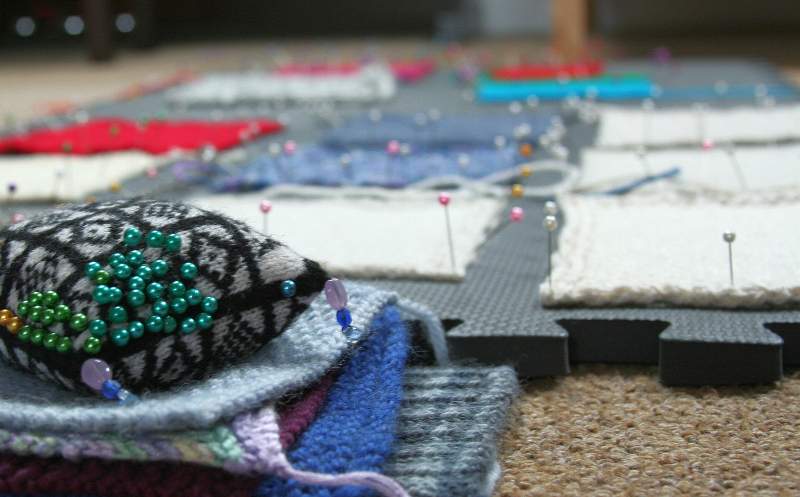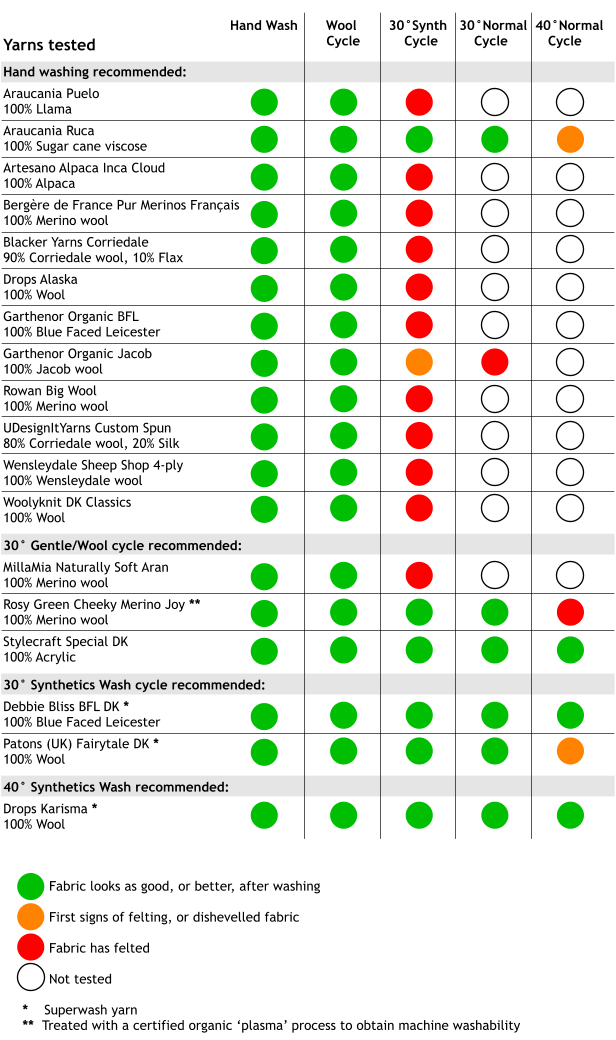
Superwash is not the only easy-care option
Untreated wool is susceptible to felting. Most animal fibers have scales along their length and when washed in a washing machine, the heat, agitation and rapid cooling at the rinse stage combine to give ideal conditions for the scales to interlock, causing the fabric to felt irreversibly.
A garment made from a superwash wool, on the other hand, can often cope with being thrown in the machine as part of the normal wash. Most superwash yarns are created by eroding the scales with acids and then coating the fibers with a synthetic resin. The coating smooths and softens the fibers, preventing felting during the washing process.
However, there are downsides associated with superwash yarns:
Environmental risks - Hazardous chemicals and large quantities of water are required, and waste water leaving the manufacturing plant can be contaminated.
Fabric stretching - The smooth nature of the fibers means the yarn has less resilience: the finished fabric of my superwash swatches grew widthways and lengthways after washing.
Lack of diversity - Few single-breed yarns are available in the quantities required for superwash processing. Many wonderful wool and alpaca yarns will be overlooked by a knitter or crocheter concerned about venturing beyond superwash.
So do we have to choose between practicality and our environment? Is there a way to avoid dripping a sinkful of water over the kitchen floor while not risking spontaneous shrinkage of your precious handknit?
To find out what different fibers can withstand during washing, I made a number of swatches in a variety of yarns: generic and single-breed untreated wool; superwash wool; alpaca; llama; and the synthetics viscose and acrylic. Then I put them through progressively more demanding washing cycles. The results are shown below.

The 30° Synthetics washing program, even with its reduced spin, involved too much agitation for the untreated wools: all the non-superwash animal fiber swatches felted. Below is the Bergere de France Pur Merinos Francais (100% untreated Merino wool) before and after the 30° Synthetics wash.

However the Wool / Hand Wash cycle on my washing machine is as gentle as washing by hand. All the hand-wash-only swatches were improved by the washing process, just as they would be by hand washing in a sink. Of course not all machines are the same as mine (for the record I have a front-loading machine, I used wool wash and no fabric conditioner) so experiment with swatches rather than garments!
I have never previously felt confident putting a handknit in the washing machine but seeing how well the swatches fared, I put two hand-wash jumpers through the gentle cycle. They came out perfectly.
Knowing how to care for a range of yarns means you can choose the right yarn for your circumstances. For example I wouldn't consider giving a hand-wash garment to a new mum - delicate care of a handknit is not on her list of priorities! If you can't be sure that a garment will be put on a gentle cycle in a washing machine, then superwash or acrylic are the sensible choice.
If you can get hold of it (and afford it!) the Rosy Green Wools gain machine-washability via a Global Organic Textile Standard-certified process that doesn't involve waste-water chemicals or a resin coating. Woolful have also provided this list of superwash alternatives.
But if you can take just a little care with your washing machine settings then the whole world of untreated animal fiber is open to you.

P.S. If you ever do find yourself with a felted jumper, here is a great way to upcycle it!
